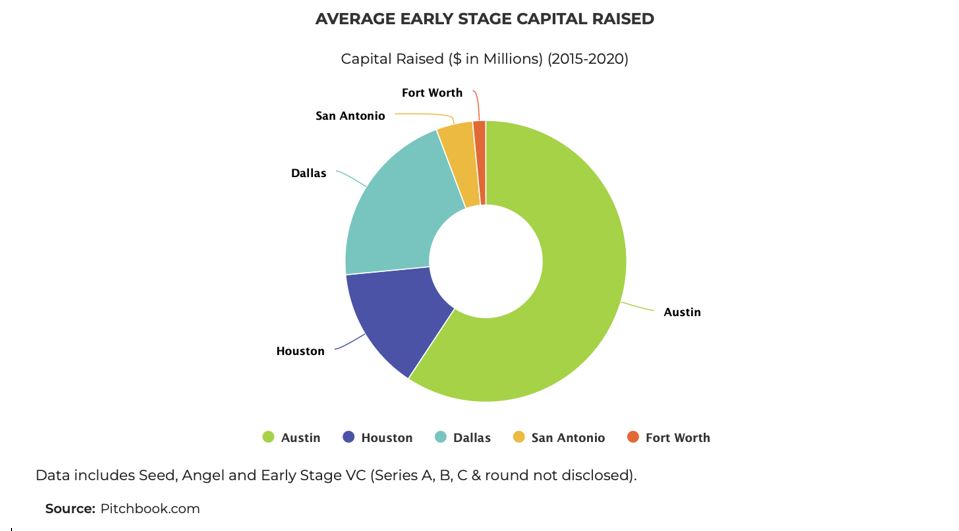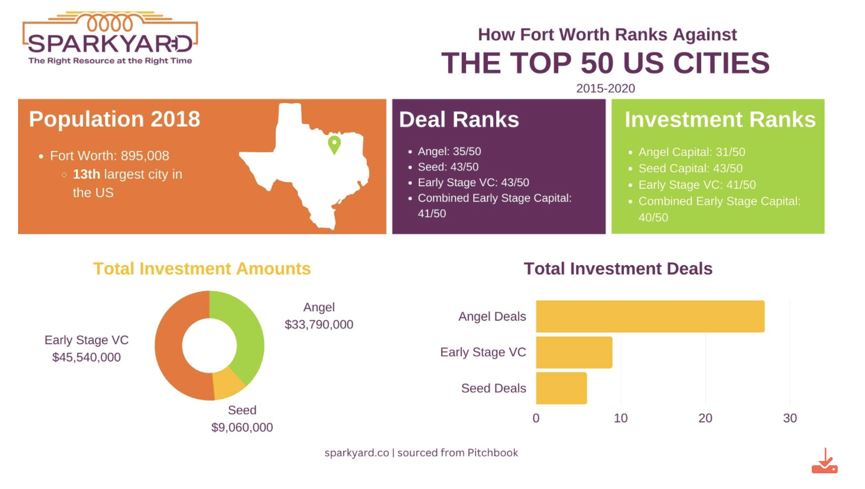The necessity of entrepreneurs and their impact on a city’s economy is often underestimated. More people are learning that Fort Worth is one of the fastest growing cities in Texas, and they assume that means all aspects of the city are thriving. While that is true in some respects, Fort Worth’s support for and investment in new companies lacks in comparison to the city’s wealth and population.
Thus began Sparkyard’s mission: to connect entrepreneurs with resources and information regarding the local startup community. The main purpose of the platform is to help business owners navigate the entrepreneurial growth process. Startups five years and younger account for 90% of new job creation across the nation. However, in the Fort Worth area, many entrepreneurs encounter obstacles growing their business due to a variety of factors, not least of which is access to funding opportunities. With the help of Sparkyard, these businesses can flourish with support from the community.
The colloquial phrase “small businesses are the backbone of the American economy,” rings true now more than ever. Fort Worth is the 13th most populated city in the nation, yet our funding levels for startup companies ranks 40th. This disparity between population and new business formation has a negative, long-term effect on the local economy. What is drawing entrepreneurs to Austin instead of Fort Worth? Why are other cities acquiring significantly more venture capital funding than Fort Worth is? Our team has approached these questions with data to advocate for Fort Worth’s entrepreneurial development.
Sparkyard’s Entrepreneurial Ecosystem Dashboard became the canvas for us to share our story: “Why Not Fort Worth?”
The Story:
Jobs
One of the most important characteristics of a city is employment opportunity and career growth potential. Startups bring opportunity to new cities because they are the primary source of job creation in the U.S economy, according to the Ewing Marion Kauffman Foundation. With this information, it is critical to recognize that startups are drivers of growth for Fort Worth. In 2020, new firms (0-1 years old) in Tarrant County created almost 25,000 jobs. By cultivating the creation of startups, Fort Worth can grow and become an entrepreneurial hub, therefore providing steady job creation.
Funding
Companies based in Fort Worth raised an average of $17 million per year in early-stage funding from 2015-2020, compared to Dallas at $236 million per year. The disparity here is wildly apparent, yet these two cities are not too different in size or even location.
Additionally, an entrepreneur in Austin, which just slightly outranks Fort Worth in population, can expect to raise $702 per person while an entrepreneur in Fort Worth can only expect to raise $17 per person. While is it unfair to compare Fort Worth to Austin – a globally recognized startup hub – it is nevertheless jarring to see the disparities in access to capital on a per capita basis considering the two cities are similar sizes.
Ranking
To reiterate, Fort Worth is the 13th most populated city in the US, yet it ranks 40th in early-stage capital raised for new businesses.
As a result of our low early-stage funding, Fort Worth falls behind with companies on the Inc. 5000 list. With Austin leading the pack and Fort Worth trailing behind San Antonio, we again see the disparity between our population and new business funding.
Conclusion
Why not Fort Worth? We have the people, but we do not have the funding. We have the motivation yet lack some important resources. By working together to cultivate our entrepreneurial ecosystem, Fort Worth can expand its opportunities and bring more value to our economy through increased entrepreneurial activity.

About the Author
Reece Carpenter, Lucy Long and Bettyann Leonard attended TCU’s Master of Science in Business Analytics (MSBA) and graduated in May 2023. Their capstone course placed them with HSC Next where they worked with the Sparkyard team to update the Ecosystem Dashboard and prepare it for its launch. They used their expertise to analyze data, generate new charts, and revisualize existing charts to make the information accessible to a wider audience. The Sparkyard team is indebted to them for their efforts.





